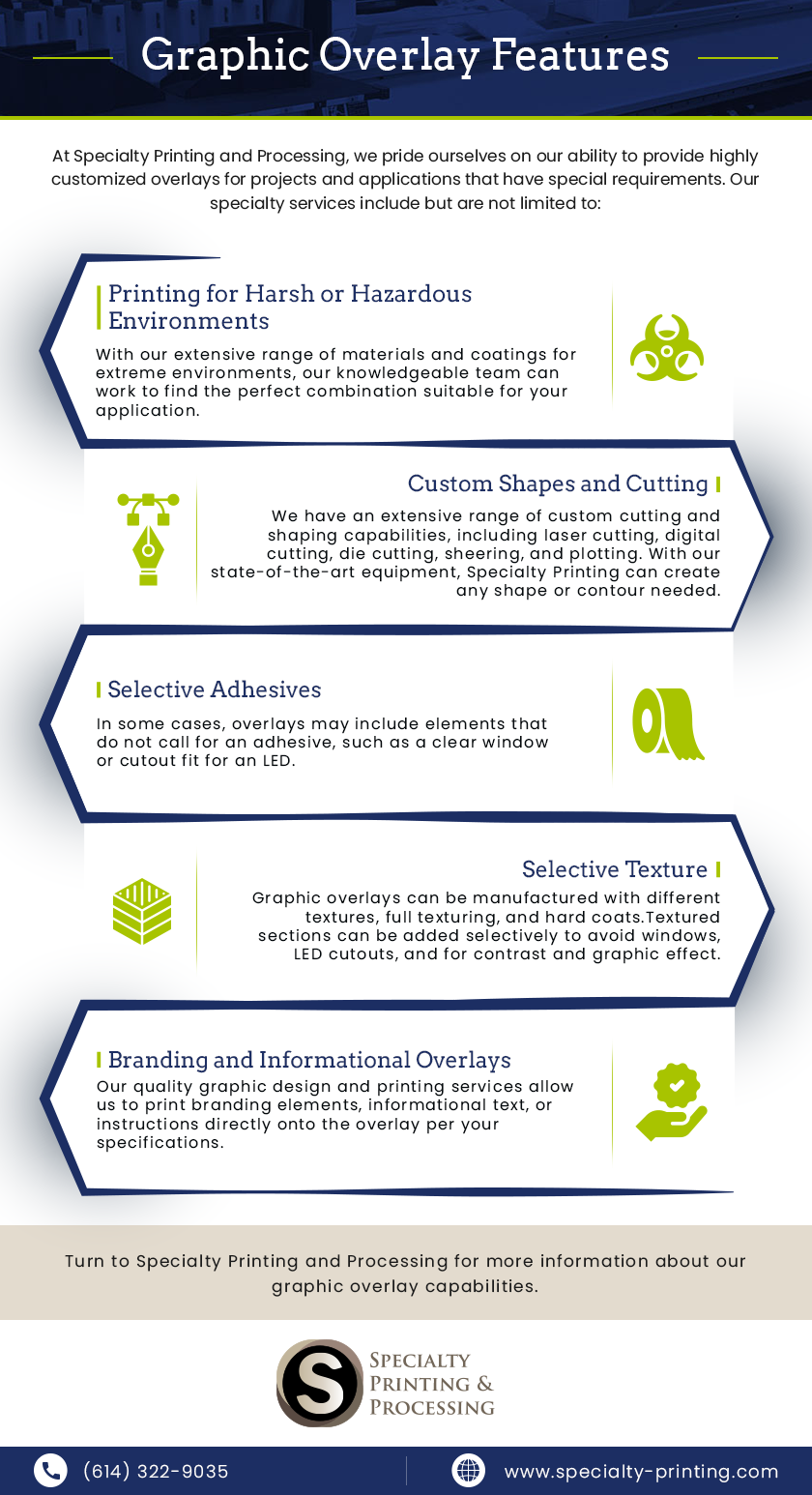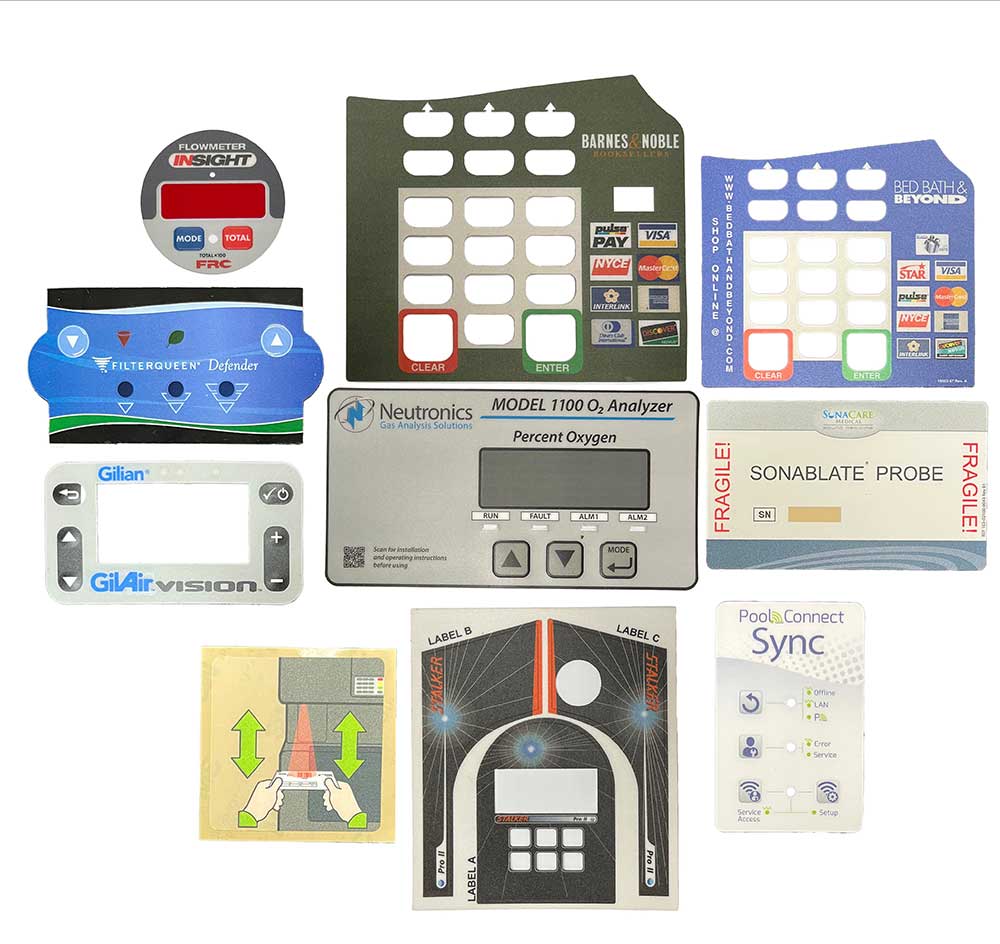Graphic Overlay and Panels-- Custom-made Solutions for Your Equipment Interface
Graphic Overlay and Panels-- Custom-made Solutions for Your Equipment Interface
Blog Article
A Comprehensive Overview to Selecting Graphic Overlays and Panels
Selecting the ideal visuals overlays and panels is a nuanced process that requires mindful factor to consider of different elements, including product homes, printing strategies, and style elements. The selection between materials such as polymer, polyester, and polycarbonate can considerably affect both sturdiness and functionality, while the alignment of printing techniques with visual demands is equally essential. Understanding usability and adherence to sector criteria can significantly improve the general effectiveness of the product. Therefore, a detailed expedition of these parts is vital to achieving optimal cause graphic overlay option. When making these selections?, what specific variables should one focus on.
Understanding Graphic Overlay Materials
Comprehending the attributes of visuals overlay materials is important for ensuring both performance and longevity in style applications. These products work as protective layers that not only enhance the visual charm of a product yet likewise execute crucial roles in user interaction and device operation.
The most usual products used in visuals overlays consist of polyester, polycarbonate, and acrylic. Acrylic overlays give clarity and are frequently picked for their optical buildings, though they might not provide the same degree of impact resistance as polycarbonate.
Furthermore, the thickness of the overlay can influence both tactile feedback and long life. Thicker overlays offer boosted longevity yet may lower versatility, while thinner options can use more complex design opportunities. Comprehending these characteristics enables developers to choose the ideal materials that straighten with the particular demands of their projects, ensuring ideal efficiency and longevity of the graphic overlays in numerous applications.
Key Printing Techniques
Usually, the selection of printing techniques is an essential element in the manufacturing of graphic overlays and panels, as it straight affects both the aesthetic top quality and durability of the end product. One of the most generally employed printing methods include display printing, electronic printing, and pad printing, each offering unique advantages.
It offers exceptional longevity against wear, making it suitable for overlays that will experience regular use. Digital printing, on the other hand, allows for high-resolution images and intricate designs, making it ideal for personalized or low-volume tasks.
Pad printing is specifically beneficial for using graphics onto irregular surfaces, guaranteeing constant quality across diverse forms. This method is frequently selected for its precision and ability to publish fine details.
Inevitably, the selection of printing method ought to align with the specific useful demands and aesthetic goals of the visuals overlay or panel, guaranteeing that the end product satisfies both visual and efficiency requirements.
Design Factors To Consider
When picking graphic overlays and panels, layout factors to consider play an essential role in making certain that the end product not just meets useful demands but additionally lines up with branding and customer experience goals. The aesthetic components, consisting of shade schemes, typography, and images, must mirror the brand identification and resonate with the target market. Graphic Overlay and Panels. A cohesive style enhances acknowledgment and sustains brand commitment
Furthermore, the layout needs to prioritize simplicity of navigating, making sure that vital info is easily accessible. This includes strategic placement of switches, icons, and text to promote user communication. The selection of materials likewise affects style; as an example, a matte finish may lower glare, while a glossy surface can boost vibrancy.
Additionally, the total dimensions and shape of the overlay must take into consideration the intended application and gadget compatibility - Graphic Overlay and Panels. Personalized shapes may supply an unique aesthetic, however they have to not compromise performance
Functionality and Capability
Usability and performance are critical elements that figure out the performance of graphic overlays and panels in real-world applications. The primary goal of these aspects is to enhance individual communication while making certain that important info is quickly available. A well-designed graphic overlay needs to facilitate user-friendly navigation and promote efficient operation of the tool or interface it accompanies.
When choosing a visuals overlay, take into consideration the layout and the plan of controls. The layout should prioritize frequently utilized features, placing them within very easy reach.
Functionality also encompasses the overlay's durability and resistance to environmental aspects. A robust graphic overlay ought to hold up against deterioration, including direct exposure to chemicals, wetness, and temperature variations, without jeopardizing its readability or tactile residential or commercial properties. Consequently, evaluating both usability and functionality during the selection process is important for guaranteeing that the Web Site graphic overlay or panel meets the specific needs of the application while providing a favorable customer experience.
Conformity and Requirements
Choosing graphic overlays and panels calls for focus not only to usability and capability but also to conformity with market standards and laws. Making certain that your overlays satisfy these standards is crucial for item market, efficiency, and security acceptance.
Various markets have specific standards that need to be complied with. For example, medical tools go through the FDA's regulations, while vehicle applications must follow ISO standards. Recognizing these demands early in the layout process will reduce the threat of expensive alterations or delays.
Product option is also crucial for conformity; particular chemicals and compounds might be limited or require accreditation. Overlays made use of in food-related applications must satisfy FDA standards for food get in touch with products, guaranteeing they do not seep damaging materials. Additionally, electromagnetic compatibility (EMC) requirements might use, particularly in electronic gadgets, demanding mindful consideration of materials and style to stop interference.
Integrating conformity checks throughout the style and production procedure not just safeguards your item but likewise boosts its look at this website trustworthiness in the marketplace. As a result, familiarity with pertinent requirements is crucial for any organization included in the production of visuals overlays and panels.

Final Thought
In final thought, choosing graphic overlays and panels requires mindful consideration of product residential or commercial properties, publishing techniques, and layout elements. A detailed understanding of these variables helps with educated decision-making, ultimately leading here to successful layout outcomes in graphic overlays and panels.

When picking visuals overlays and panels, layout factors to consider play an essential function in guaranteeing that the final product not only meets useful needs however likewise lines up with branding and user experience objectives.In verdict, picking visuals overlays and panels requires cautious consideration of product buildings, publishing methods, and design components. A thorough understanding of these aspects promotes notified decision-making, ultimately leading to effective layout results in graphic overlays and panels.
Report this page